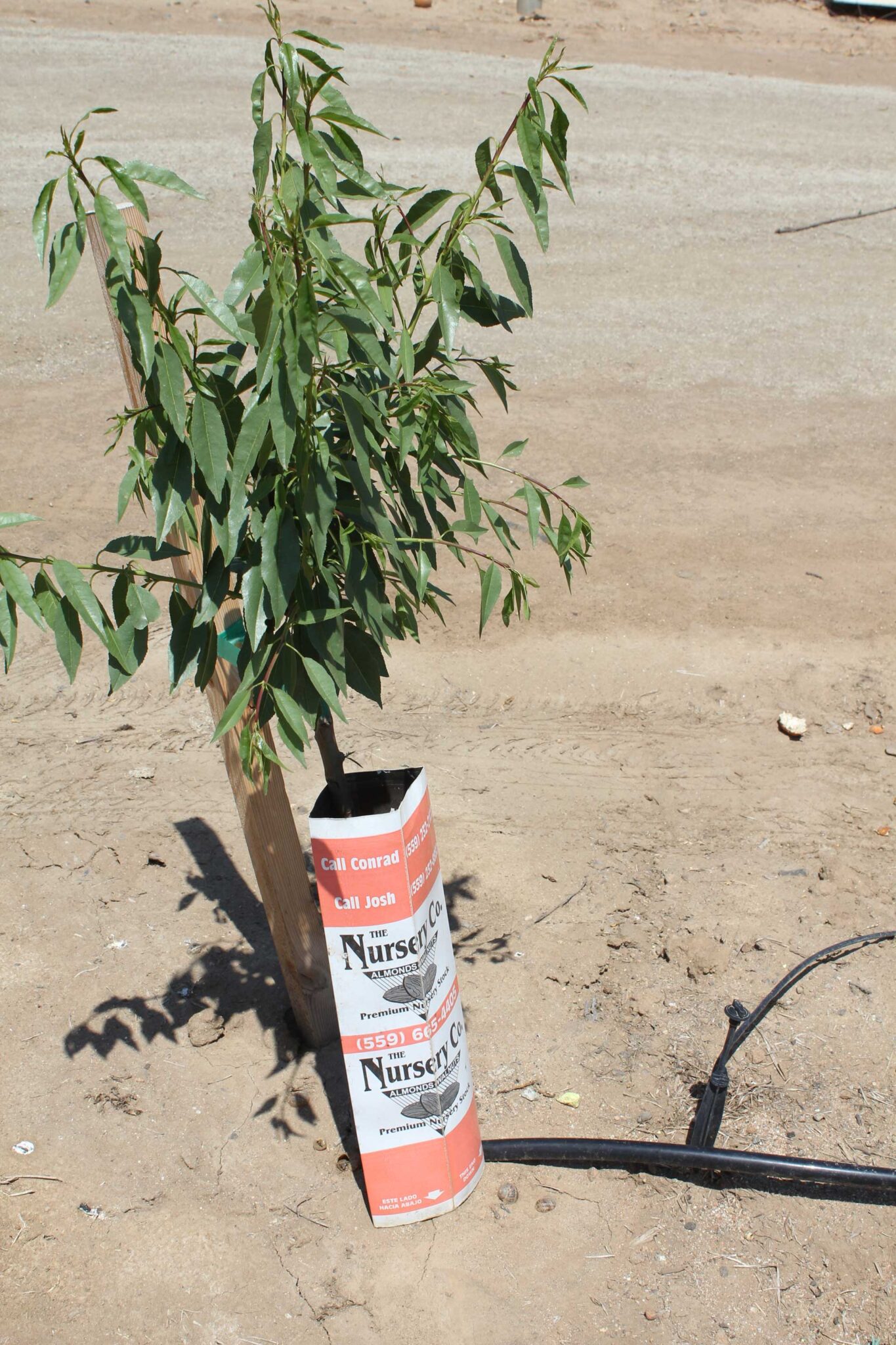
Fungal canker diseases and Phytopthora are two important conditions to watch for in almond orchards during the dormant season, which is when the peak sporulation of fungal pathogens occurs.
Drew Wolter, Almond Board of California’s senior pest management specialist, said that fungal canker pathogens spread via spores released from fruiting structures. Rain or wind events spread spores to fresh tree wounds or breaks in tree bark.
Following harvest, Wolter said, orchards should be scouted for shaker damage. If pruning is scheduled after harvest, fresh wounds should be treated prophylactically if rain is forecast in the next two weeks.
Pruning wounds in almond trees are susceptible to fungal disease infection, especially if they are made for primary and secondary scaffold selection. Mechanical injury from shakers also opens trees for infection.
Wolter said that research conducted by UCCE Specialist Florent Trouillas has shown good protection of tree wounds treated with Thiophante-methyl and a highly efficacious game-changing biocontrol Trichoderma. Both provide 80% to 100% control when applied immediately after a wound is created. Trichoderma has EPA approval, but is awaiting a California registration.
Wolter recommends not making horizontal cuts (bench cuts) when pruning as they allow rainwater to sit on the surface of the wound. Dead, infected wood should be removed from the orchard to reduce the amount of canker disease inoculum in the orchard. Cutting checks in berms to reduce the amount of standing water in the orchard is also recommended.
Pooling or standing water provides an opportunity for the water mold root rot to infect trees when soils are saturated. For aerial Phytopthora, the spread occurs when spores are deposited on limbs or in crotches of trees in windy conditions.
Rootstock selection can play a role in mitigating root rot. USDA-ARS Plant Pathologist Greg Browne’s research has shown that plum parentage rootstocks, including RootPacR, Marianna 2624 and Krymsk-86, are the most resistant to infections while seedling almond rootstock are most susceptible.
Key cultural practices that can aid in mitigation include planting trees on a berm or mound so water can be wicked away from the crown of the tree. Wolter said that water infiltration rates could be maintained using soil amendments or cover crops.
Checks can be cut in berms to allow water to drain away. Removal of tree cartons by the second year is recommended as they catch debris and hold moisture and spores surrounding green, susceptible trunks. Removing debris from tree crotches is another way to minimize the damp environment conducive to fungal infections.










